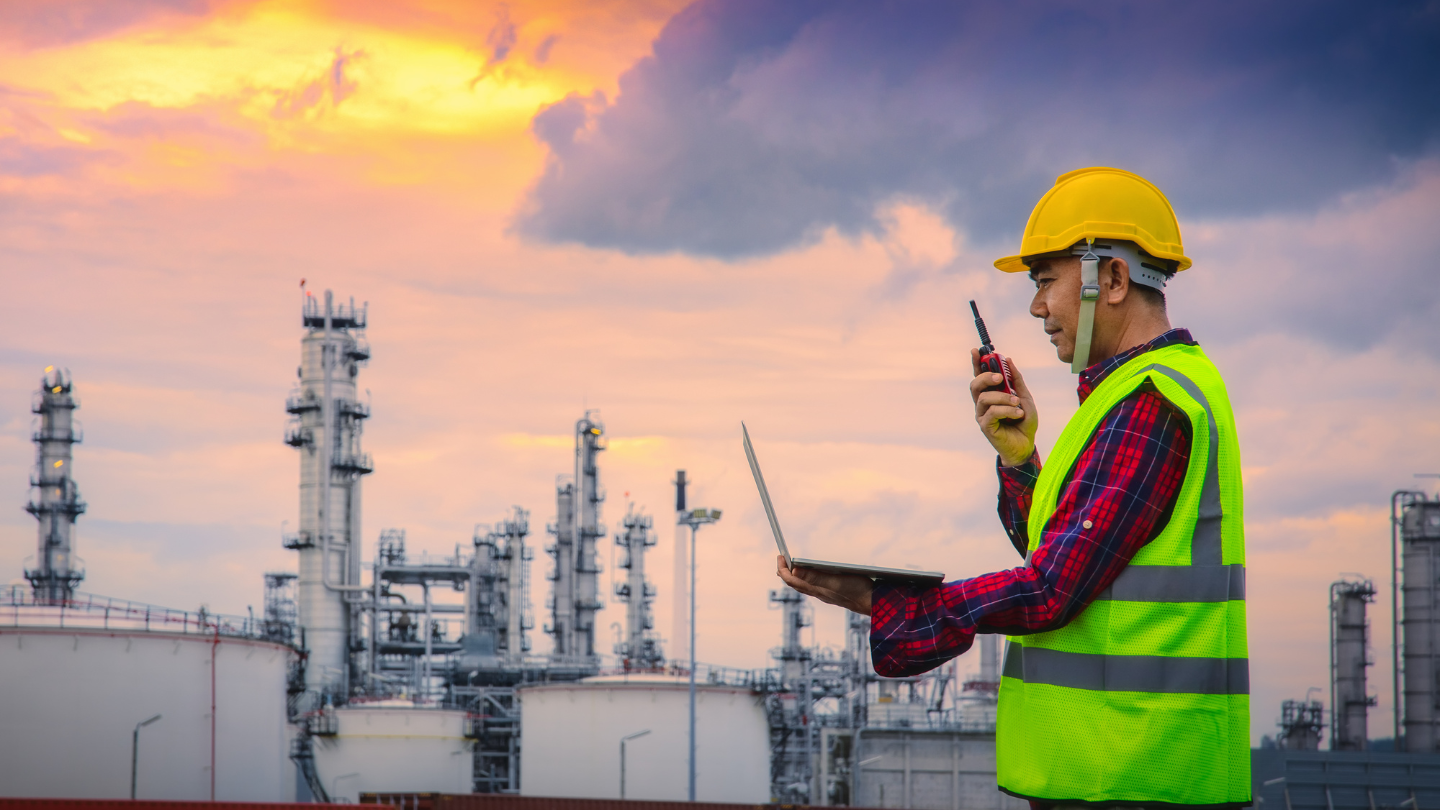Industrial workplaces, especially in sectors like oil & gas, petrochemicals, and manufacturing, are inherently high-risk environments. From pressure build-ups in relief systems to chemical releases, small lapses can quickly escalate into serious incidents. That’s why risk assessment in safety is not just a regulatory requirement but a cornerstone of safe and reliable operations.
In this guide, we’ll break down what is risk assessment in safety, why it matters for industrial workplaces, the key steps involved, and how organizations can use it to move beyond compliance toward strategic, long-term value.
Why Risk Assessment Is Critical in Industrial Workplaces
The importance of risk assessment in the workplace cannot be overstated. It provides a structured approach to identify hazards, assess risks, and implement preventive measures before issues escalate into accidents.
For process industries, the stakes are particularly high:
- Worker Safety: Protecting personnel from injury or exposure to harmful conditions.
- Asset Protection: Safeguarding equipment from damage due to overpressure, leaks, or failures.
- Environmental Responsibility: Minimizing releases that could harm surrounding communities or ecosystems.
- Regulatory Compliance: Meeting stringent requirements set by agencies such as OSHA, API, and local authorities.
- Operational Reliability: Preventing unplanned shutdowns and losses caused by safety incidents.
At Ingenero, decades of process safety risk assessment experience show that 25–30% of relief devices in processing facilities have deficiencies. Proactively uncovering these weaknesses ensures not only compliance but also long-term system reliability.
The Five Steps of Risk Assessment Explained
So, what are the five steps of risk assessment? Organizations worldwide follow this simple but powerful framework to ensure workplace safety.
- Hazard Identification and Risk Assessment
The first step is to identify any potential hazards,such as chemical releases, equipment malfunctions, or overpressure events, that could cause harm. In process industries, this includes evaluating the adequacy of relief systems, flare designs, and dispersion risks.
- Determine Who Might Be Harmed and How
Consider employees, contractors, visitors, and even the surrounding community. For example, a flare release may impact not only operators but also nearby populations.
- Evaluate Risks and Implement Controls
Analyze the severity and likelihood of hazards and determine appropriate control measures, such as installing additional pressure relief valves, upgrading flares, or implementing monitoring systems. This is where quantitative risk assessment tools can provide data-driven insights.
- Record Findings and Implement Them
Documenting risks and controls is vital. Tools like Ingenero’s Codename SECURUS provide centralized repositories to manage safety relief device documentation, ensuring visibility and accountability across projects.
- Review and Update Regularly
Risks evolve as processes change. That’s why continuous monitoring, audits, and system upgrades are essential for maintaining effective workplace safety risk assessment.
Types of Risk Assessment for Industrial Safety
Different scenarios call for different types of risk assessment. In industrial settings, the most common approaches include:
- Qualitative Risk Assessment: Based on expert judgment and experience, often used in initial screenings.
- Quantitative Risk Assessment (QRA): A data-driven method that uses numerical values and probabilities to evaluate potential outcomes. Essential for high-stakes industries like oil & gas.
- Process Safety Risk Assessment: Focused specifically on process hazards such as overpressure, flammable releases, and toxic exposures.
- Industrial Risk Assessment: Broad evaluations that encompass equipment, personnel, and environmental factors in complex facilities.
- Workplace Safety Risk Assessment: General assessments covering everyday hazards such as slips, trips, electrical risks, or ergonomic issues.
Understanding the appropriate method is key to creating a robust safety strategy. For example, while a qualitative assessment might be enough for minor hazards, risk assessment in oil and gas industry typically requires a more rigorous quantitative risk assessment approach.
Suggesteed Read: Enhancing Oil Industrial Safety: Key Approaches to Risk Management Optimization
How to Conduct a Risk Assessment in Process Industries
Knowing how to conduct a risk assessment in industrial settings requires both structured methodology and specialized expertise. Here’s a practical framework:
- Define Scope and Objectives
Determine whether you are analyzing a single piece of equipment, a unit, or an entire plant.
- Gather Data
Collect operational data such as pressure, flow, temperature, and historical incident records. This may also include manufacturer specifications of relief devices.
- Identify Hazards
Using tools like HAZOP (Hazard and Operability Study) or What-If analysis, evaluate potential deviations from design intent.
- Perform Engineering Analysis
Assess pressure safety valve sizing, flare systems, and dispersion modeling. Ingenero’s teams, for example, apply advanced simulation models to ensure accuracy.
- Prioritize Risks
Rank hazards by severity and probability to focus efforts where they matter most.
- Implement Mitigation Measures
This may include redesigning piping, adding relief valves, enhancing flare systems, or improving operator training.
- Document and Train
Maintain records and ensure teams are trained to respond appropriately.
By following this approach, facilities can strengthen their process safety risk assessment programs and reduce vulnerabilities that could lead to accidents.
Moving Beyond Compliance: The Strategic Value of Risk Assessment
Many companies see risk assessment purely as a compliance exercise. However, forward-thinking organizations recognize its strategic value:
- Operational Reliability: Identifying deficiencies in advance reduces downtime and equipment damage.
- Cost Savings: Proactive fixes are cheaper than reactive incident responses.
- Reputation and Trust: Demonstrating strong safety practices builds trust with regulators, investors, and communities.
- Continuous Improvement: Data-driven insights from assessments help optimize operations beyond safety.
By embedding risk assessment into everyday operations, industrial companies can create safer, more efficient, and more profitable workplaces.
Partnering with Experts for Effective Safety Risk Assessment
While internal teams may manage day-to-day assessments, partnering with specialists ensures a deeper level of expertise. For example, Ingenero offers:
- Relief System Engineering: Design and analysis of pressure safety valves, flare studies, and dispersion modeling.
- Codename SECURUS Software: A centralized platform for safety relief device documentation, calculations, and reporting.
- Extensive Experience: Over 100 refineries, petrochemical facilities, and oil & gas plants analyzed, with more than 100,000 relief devices validated against API 520/521 standards.
- Training and Learning Opportunities: From two-day relief system design courses to specialized seminars for engineering teams.
By leveraging such expertise, organizations gain a partner that not only ensures compliance but also enhances long-term system safety and reliability.
Conclusion: Building a Safer and More Reliable Workplace
So, what is risk assessment in safety? At its core, it’s a structured way to identify hazards, evaluate risks, and implement preventive measures. But in industrial workplaces, it goes far beyond that,it’s a strategic tool to safeguard lives, protect assets, and ensure sustainable operations.
Whether it’s hazard identification and risk assessment, quantitative risk assessment, or specialized risk assessment in oil and gas industry, the approach must be systematic, data-driven, and continuously evolving.
With proven expertise in process safety risk assessment, relief system design, and advanced digital tools, Ingenero helps industries transform safety from a compliance requirement into a competitive advantage. The outcome: workplaces that are not only safer but also more reliable, resilient, and ready for the future.



